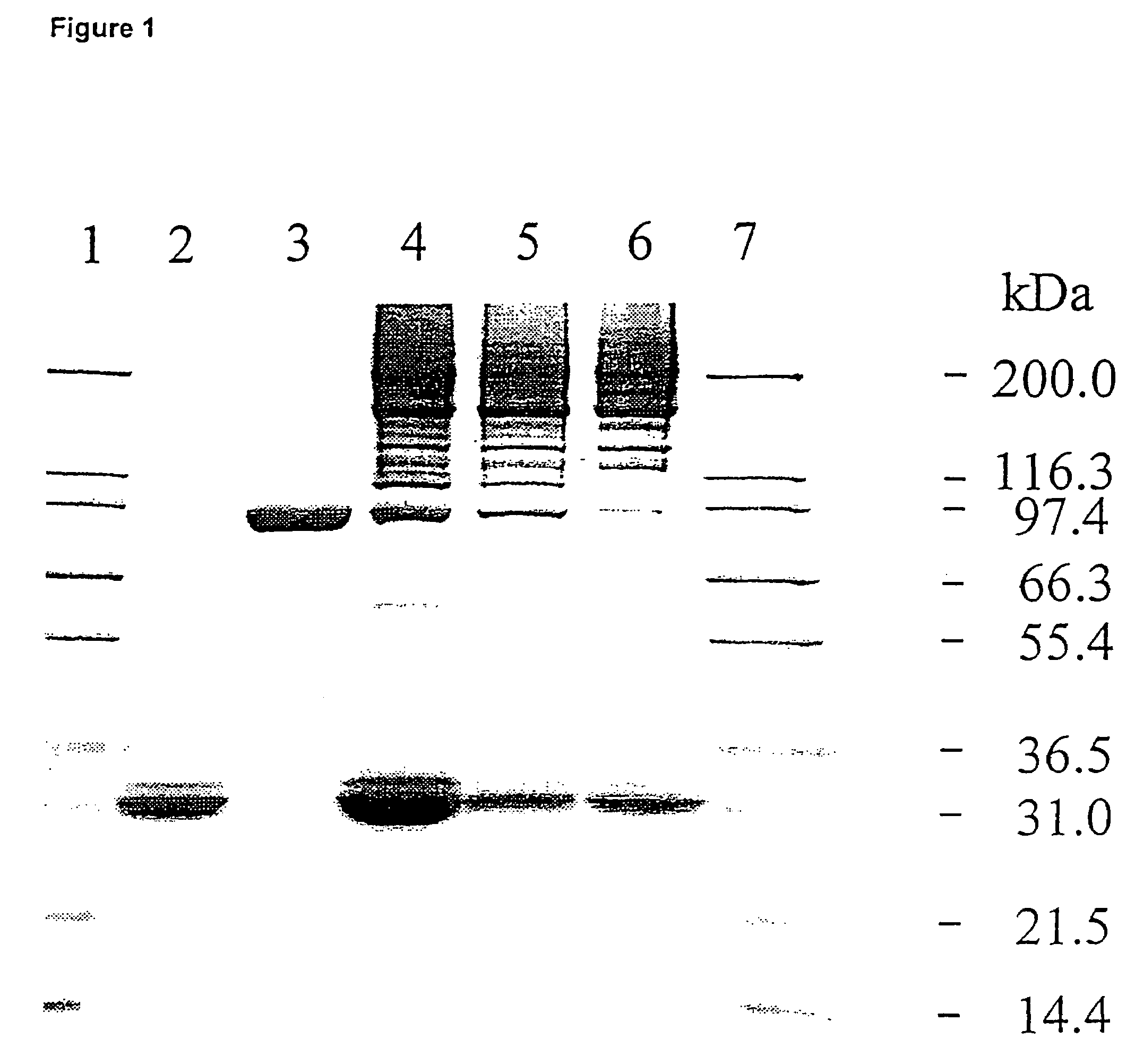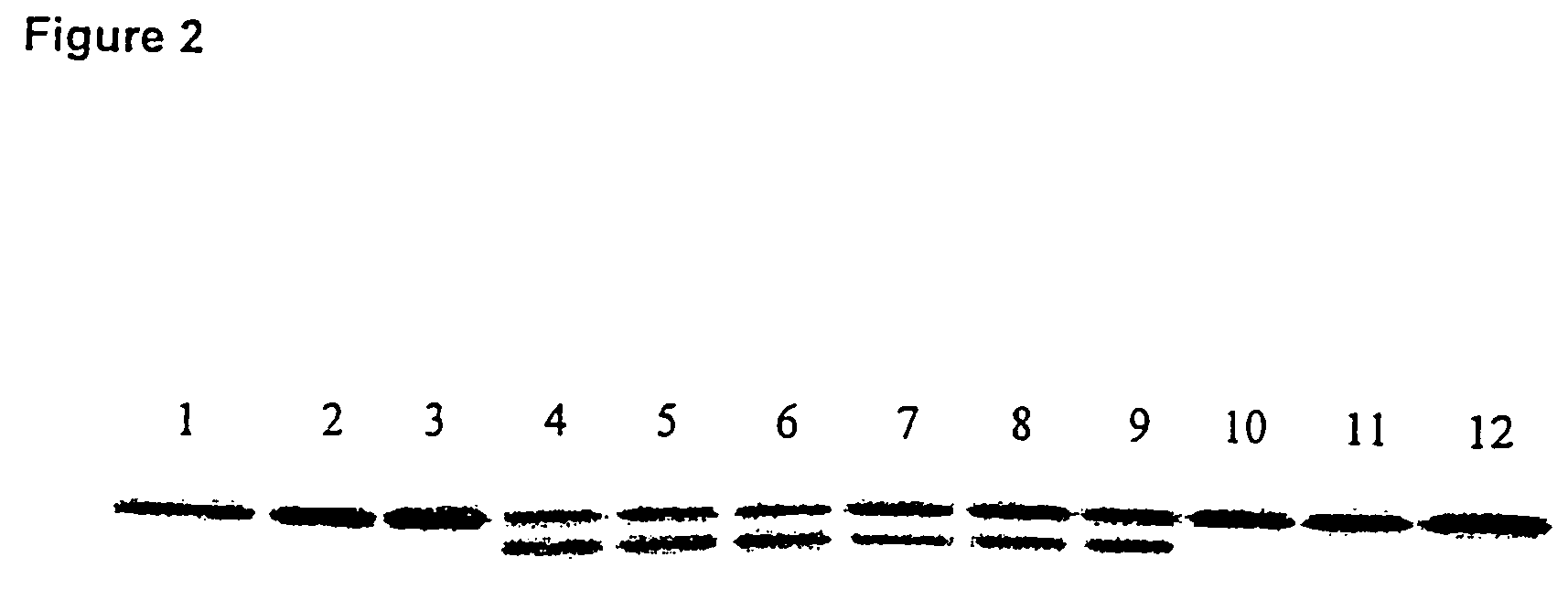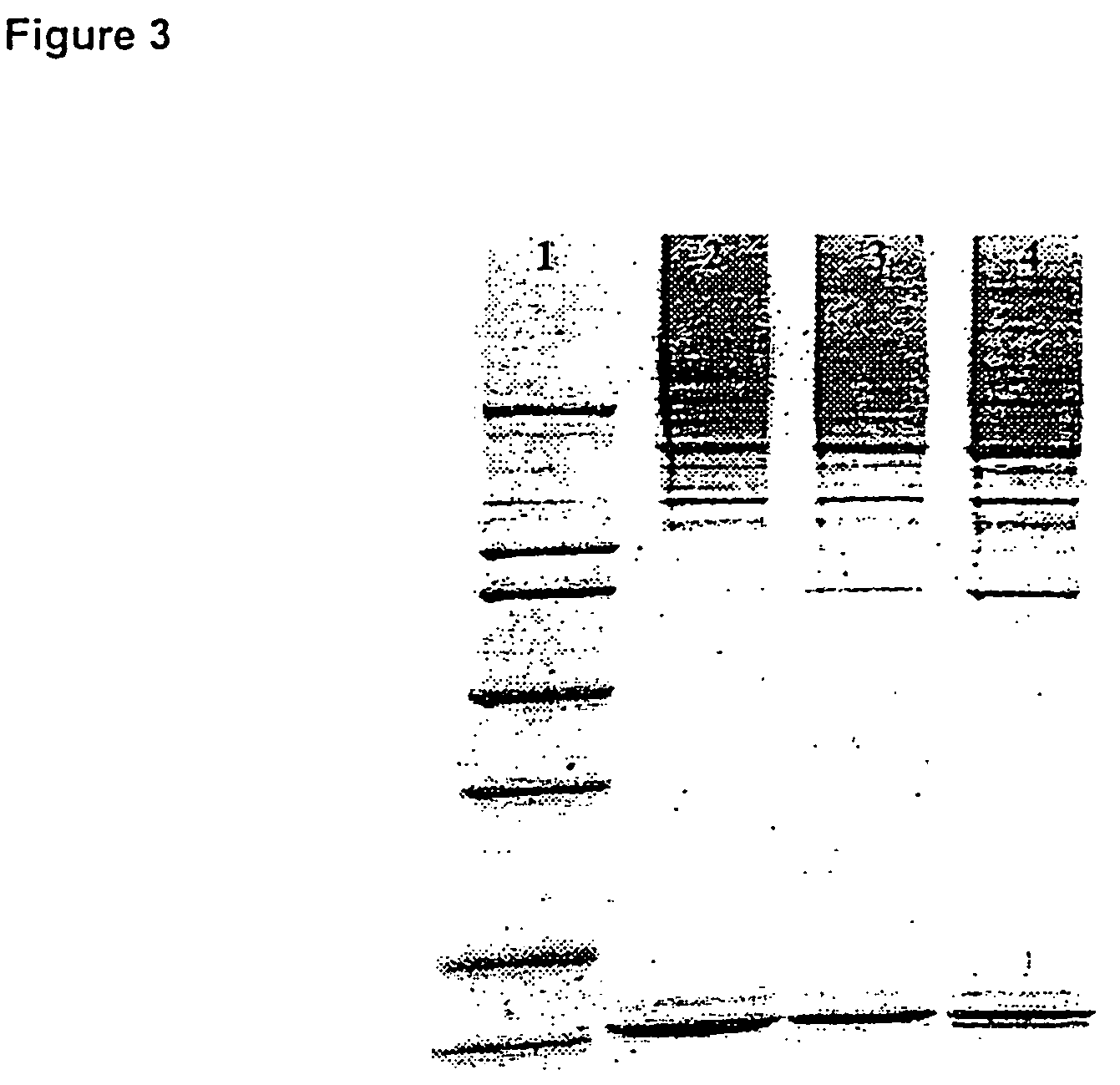Conjugates of galactose-binding lectins and clostridial neurotoxins as analgesics
a technology of clostridial neurotoxins and lectins, which is applied in the field of conjugates of galactose-binding lectins and clostridial neurotoxins as analgesics, can solve the problems of opiates being difficult to use long-term, opiates are not effective, and opiates have a number of limitations as drugs, so as to prevent the transmission of pain signals, reduce pain, and preferably prevent the effect of pain signals
- Summary
- Abstract
- Description
- Claims
- Application Information
AI Technical Summary
Benefits of technology
Problems solved by technology
Method used
Image
Examples
example 1
The Production of a Conjugate Between a Lectin from Erythrina cristagalli and LHN / A
Materials
[0100]Lectin from E. cristagalli (ExL) was obtained from Sigma Ltd.
[0101]LHN / A was prepared essentially by the method of Shone C. C., Hambleton, P., and Melling, J. 1987, Eur. J. Biochem. 167, 175-180.
[0102]SPDP was from Pierce Chemical Co.
[0103]PD-10 desalting columns were from Pharmacia.
[0104]Dimethylsulphoxide (DMSO) was kept anhydrous by storage over a molecular sieve.
[0105]Denaturing sodium dodecylsulphate polyacrylamide gel electrophoresis (SDS-PAGE) was performed using gels and reagents from Novex
[0106]Immobilized lactose-agarose was obtained from Sigma Ltd.
[0107]Additional reagents were obtained from Sigma Ltd.
Methods
[0108]The lyophilized lectin was rehydrated in phosphate buffered saline (PBS) to a final concentration of 10 mg / ml. Aliquots of this solution were stored at −20° C. until use.
[0109]The ExL was reacted with an equal concentration of SPDP by the addition of a 10 mM stock s...
example 2
The Production of a Conjugate Between a Lectin from Erythrina corallodendron and LHN / A
[0118]The procedure for production of a conjugate between a lectin from Erythrina corallodendron and LHN / A is essentially as described in Example 1 but with the following differences:
Materials
[0119]Lectin from E. corallodendron (EcL) was obtained from Sigma Ltd.
[0120]FIG. 3 illustrates the purification scheme for the EcL-LHN / A conjugate. Samples were applied to 4-20% polyacrylamide gradient gels and subjected to electrophoresis prior to staining with Coomassie blue. Lane 1=molecular weight markers. Lane 2 represents the post-lactose affinity purified sample of EcL-LHN / A. Lane 3 is a sample of pre-lactose affinity purified (size-exclusion chromatography only) EcL-LHN / A. Lane 4 is a sample of pre-lactose affinity purified ExL-LHN / A.
example 3
The Production of a Conjugate between a Lectin from Glycine max and LHN / A
[0121]The procedure for production of a conjugate between a lectin from Glycine max_and LHN / A is essentially as described in Example 1 but with the following differences:
Materials
[0122]Lectin from G. max (SBA) was obtained from Sigma Ltd.
Method
[0123]For the affinity chromatography step an immobilized N-acetylgalactosamine (GalNAc) column was used and specific SBA-LHN / A was eluted by the addition of 0.3M lactose. FIG. 4 illustrates SDS-PAGE profile changes during the purification scheme for SBA-LHN / A. SBA-LHN / A was purified from crude conjugate mixture by Superose-12 size-exclusion chromatography and immobilized N-acetylgalactosamine affinity chromatography. Samples were subjected to SDS-PAGE on 4-20% polyacrylamide gels. Lanes 6-8 were run in the presence of 0.1M DTT. Lanes 1 (& 7) and 2 (&8) indicate SBA and SPDP-derivatised LHN / A respectively, prior to conjugation. Lanes 3, 4 & 5 (& 6) represent conjugation m...
PUM
 Login to View More
Login to View More Abstract
Description
Claims
Application Information
 Login to View More
Login to View More - R&D
- Intellectual Property
- Life Sciences
- Materials
- Tech Scout
- Unparalleled Data Quality
- Higher Quality Content
- 60% Fewer Hallucinations
Browse by: Latest US Patents, China's latest patents, Technical Efficacy Thesaurus, Application Domain, Technology Topic, Popular Technical Reports.
© 2025 PatSnap. All rights reserved.Legal|Privacy policy|Modern Slavery Act Transparency Statement|Sitemap|About US| Contact US: help@patsnap.com



